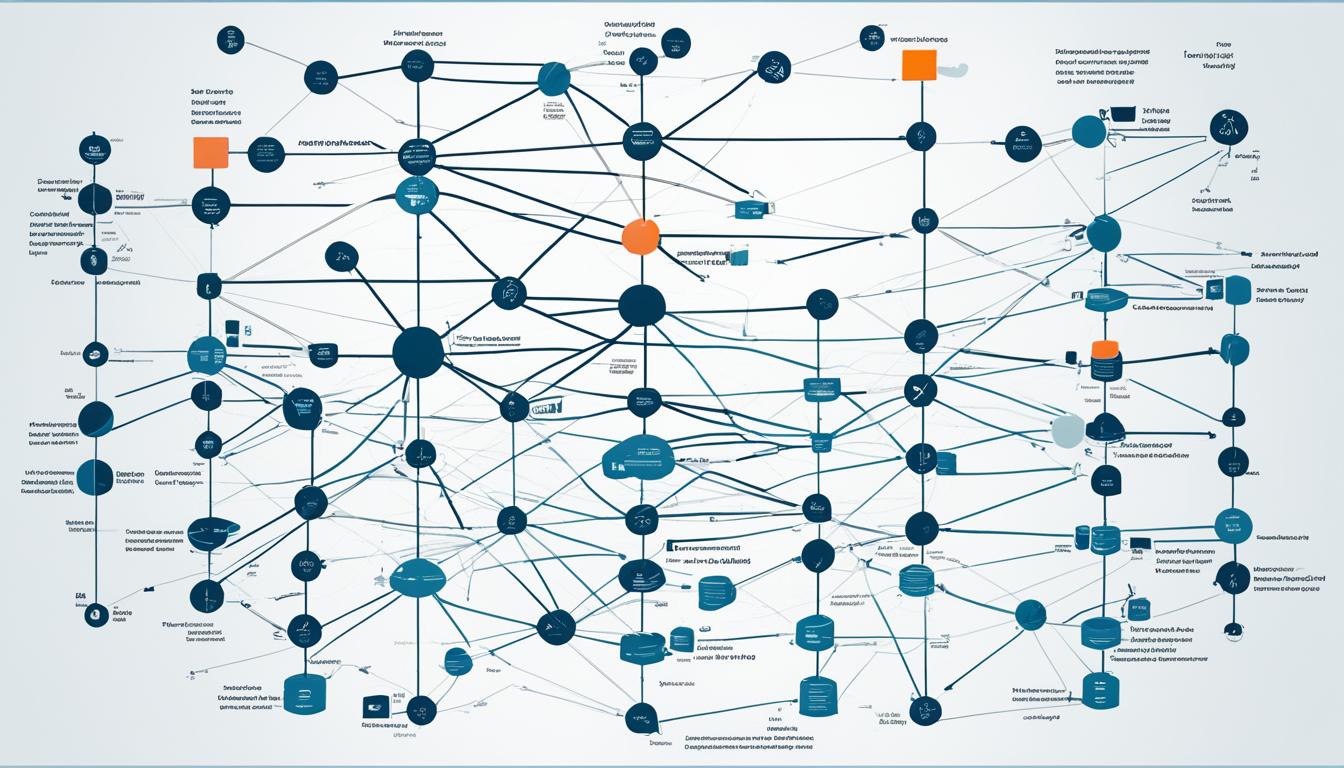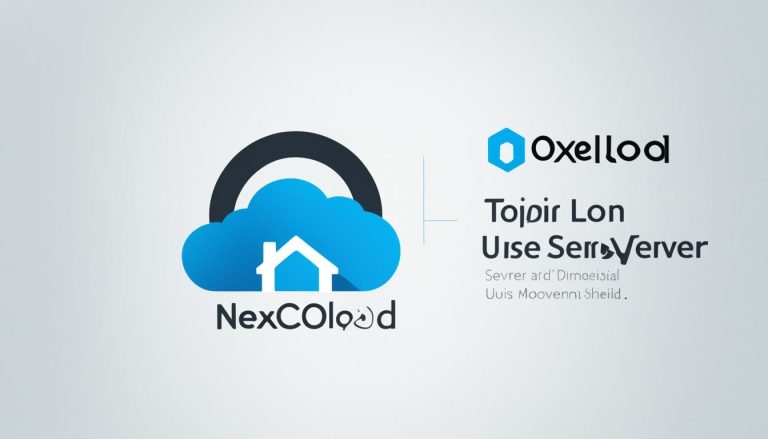What is a Relational Database: A Guide
What is a Relational Database? In the world of database management systems, a relational database is a popular choice for structured data storage. It follows the relational data model, which organizes data into tables or relations. This model allows for efficient and flexible storage of complex data, making it easier to manage and retrieve information.
When working with relational databases, one commonly used language is SQL (Structured Query Language). SQL queries enable users to write commands to interact with databases, run complex searches, and perform various tasks related to database management. Additionally, the process of normalizing databases helps ensure data integrity by eliminating redundancy and improving efficiency.
Table relationships play a crucial role in the design and structure of relational databases. They establish connections between tables, enabling the retrieval of data from multiple tables using SQL joins. This feature makes relational databases powerful tools for managing large datasets and extracting valuable insights.
Key Takeaways:
- A relational database follows the relational data model and allows for structured data storage.
- SQL queries are used to interact with relational databases and perform database management tasks.
- Database normalization ensures data integrity by eliminating redundancy and improving efficiency.
- Table relationships and SQL joins enable the retrieval of data from multiple tables.
- Relational databases are powerful tools for managing large datasets and extracting valuable insights.
History of the Relational Model
Before the advent of computers, physical databases like file cabinets were used to store and manage information. In the mid-20th century, advancements in computer science led to the recognition of computers’ potential for data storage. However, there were no theories for organizing data in meaningful, logical ways. The hierarchical model, one early database model, was limited in representing relationships.
In the late 1960s, Edgar F. Codd proposed the relational model, which allowed for flexible table relationships and influenced the development of database languages like SQL. By the mid-1980s, Codd’s relational model had been implemented in commercial database management products.
| Database Model | Representing Relationships |
|---|---|
| Hierarchical Model | Limited |
| Relational Model | Flexible |
Organization of Data in Relational Databases
In the relational model, data is organized in tables, which are referred to as relations. Each table consists of rows, also known as tuples, that contain a set of attributes or columns. These columns represent different facets or characteristics of the data.
For example, in a database for an e-commerce store, a “Customers” table may include columns for customer ID, name, email address, and phone number.
Tuples, on the other hand, represent unique instances of the data. Each tuple corresponds to a specific record in the table.
In the “Customers” table, each row or tuple represents a separate customer with their unique set of attributes.
Attributes, or columns, in the table have specified data types, such as text, numbers, dates, or booleans, to ensure consistency and accuracy of the data being stored.
For instance, the customer ID column might have a data type of integer, while the name column could have a data type of text.
Each table in a relational database should have a primary key, which is a unique identifier for each row. The primary key ensures that each record can be uniquely identified and accessed.
Continuing with the example of the “Customers” table, the customer ID column could serve as the primary key.
To establish relationships between tables, foreign keys are used. A foreign key is a column or set of columns in one table that refers to the primary key in another table.
For instance, in a related “Orders” table, the customer ID column might be a foreign key that references the primary key in the “Customers” table.
This relationship between tables using foreign keys helps maintain data integrity and establishes the connections between different entities in the database.
Imagine a table for “Products” which also has a foreign key referencing the primary key of the “Customers” table to indicate which customer made the purchase.
Overall, the organization of data in relational databases involves the structuring of tables, tuples, attributes, and the use of primary and foreign keys to establish relationships between tables.
Let’s take a closer look at the organization of data in relational databases through the following table:
| Table | Columns | Data Types | Primary Key | Foreign Key |
|---|---|---|---|---|
| Customers | Customer ID, Name, Email Address, Phone Number | Integer, Text, Text, Text | Customer ID | N/A |
| Orders | Order ID, Customer ID, Product ID, Quantity | Integer, Integer, Integer, Integer | Order ID | Customer ID |
Retrieving Data from Relational Databases
When working with relational databases, the ability to retrieve data is crucial. SQL, or Structured Query Language, provides a powerful toolset for querying databases and retrieving the desired information. By issuing queries, users can filter and manipulate data to obtain the specific results they need.
SQL offers a wide range of clauses, predicates, and expressions that allow for fine control over the data returned in the result set. Let’s take a closer look at some of these elements:
- Clauses: SQL clauses, such as SELECT, FROM, WHERE, and ORDER BY, define the structure and conditions of the query. They determine which columns or attributes to retrieve, which tables to search, and how the results should be sorted.
- Predicates: Predicates are conditions used to filter the data in the result set. They enable you to specify criteria that must be met for a row to be included in the query results. Predicates can be simple, such as equality or inequality comparisons, or they can involve more complex logic using logical operators like AND and OR.
- Expressions: Expressions in SQL allow for calculations, transformations, and formatting of data within the query. They can involve arithmetic operations, string manipulations, date calculations, and more. Expressions are useful for creating derived columns or performing calculations on the data before returning it in the result set.
One of the strengths of relational databases is the ability to retrieve data in an ad hoc manner. Unlike other types of databases that require knowledge of the physical storage location, relational databases offer flexibility and customization in data retrieval. With SQL queries, users can dynamically extract the information they need without prior knowledge of the database structure.
Here’s an example of a SQL query:
SELECT customer_name, order_date, total_amount
FROM orders
WHERE order_status = ‘completed’
ORDER BY order_date DESC;
This query selects the customer name, order date, and total amount from the “orders” table. It filters the results to only include completed orders and orders them in descending order based on the order date.
By leveraging the power of SQL queries, users can efficiently retrieve the data they need from relational databases, enabling them to make informed decisions and gain valuable insights.
Note: The image above visually represents the process of retrieving data from a relational database using SQL queries.
Advantages and Disadvantages of Relational Databases
Relational databases offer several advantages that make them a popular choice for efficient data management. These advantages include:
- Flexibility: Relational databases provide flexibility in modifying data structures, allowing for easy updates and modifications to accommodate changing business needs.
- ACID Compliance: Relational databases adhere to the ACID (Atomicity, Consistency, Isolation, Durability) principles, ensuring data validity and transaction integrity.
- Ease of Use: Relational databases are user-friendly and widely supported, with SQL as a standardized language for querying and manipulating data.
- Collaboration Capabilities: Multiple users can access and work on a relational database simultaneously, enabling effective collaboration and sharing of data.
- Built-in Security Features: Relational databases offer robust security mechanisms to protect sensitive data, including user authentication and authorization, data encryption, and access control.
- Database Normalization: Relational databases employ normalization techniques to eliminate duplicate data and enhance data integrity, resulting in efficient storage and improved query performance.
However, relational databases also have certain disadvantages to consider:
- Scalability: Scaling a relational database horizontally can be challenging and complex due to the need for maintaining data consistency across multiple servers.
- Non-Relational Databases: While relational databases excel at structured data management, non-relational databases offer greater flexibility for storing and querying unstructured and semi-structured data types.
To better understand the advantages and disadvantages of relational databases, refer to the table below:
| Advantages | Disadvantages |
|---|---|
| Flexibility in modifying data structures | Challenging horizontal scalability |
| ACID compliance for data validity | Non-relational databases offer more flexibility for unstructured data |
| Ease of use with SQL queries | |
| Collaboration capabilities | |
| Built-in security features | |
| Database normalization to reduce redundancy and improve data integrity |

Relational Database Management Systems
Relational Database Management Systems (RDBMS) play a vital role in creating, updating, and managing relational databases. These software applications ensure efficient data storage and retrieval, offering a wide range of features to meet the diverse needs of businesses and organizations.
“RDBMS solutions provide comprehensive managed services, simplifying the complexities of database maintenance, patching, capacity management, and infrastructure support.”
Some of the most popular RDBMS options available include:
Additionally, there are cloud-based RDBMS options like:
- Cloud SQL
- Cloud Spanner
- AlloyDB
These cloud-based solutions offer the benefits of scalability, accessibility, and reliability by leveraging the power of cloud computing.
MySQL
MySQL is an open-source RDBMS that provides a robust solution for managing databases of all sizes. It offers excellent performance, high availability, and scalability, making it a popular choice for web applications, small businesses, and enterprise-level organizations.
PostgreSQL
PostgreSQL is another powerful open-source RDBMS that boasts advanced features and extensibility. It offers support for complex data types, JSON storage, and geospatial data, making it suitable for diverse use cases such as geospatial applications, financial systems, and scientific research.
Oracle Database
Oracle Database is a highly reliable and scalable RDBMS used by large organizations and enterprises worldwide. It provides a comprehensive set of features for data management, security, and performance tuning, making it a preferred choice for mission-critical systems.
When it comes to managing relational databases, these RDBMS options offer robust solutions with varying features and capabilities. Whether it’s the simplicity of MySQL, the versatility of PostgreSQL, or the enterprise-grade power of Oracle Database, organizations can choose the RDBMS that best meets their specific requirements.
Applications of Relational Databases
Relational databases have become indispensable tools for data management in various applications. Their ability to efficiently store and retrieve structured data makes them valuable across a wide range of industries and purposes. Let’s explore some of the key applications where relational databases excel.
Data Management
Relational databases are essential for effective data management in organizations and businesses. They provide a structured and organized framework for storing, manipulating, and accessing data. With features such as tables, relations, and foreign keys, relational databases ensure data integrity and consistency, enabling businesses to make informed decisions based on accurate and reliable information.
Research and Analysis
In research fields, relational databases play a crucial role in organizing and analyzing large volumes of data. Whether it’s scientific research, market studies, or academic investigations, researchers rely on relational databases to store and query structured data. The ability to perform complex SQL queries allows researchers to uncover patterns, correlations, and insights that drive advancements in their respective fields.
Marketing
Relational databases are valuable tools in marketing efforts. They enable marketers to gather and analyze customer data, segment audiences, and personalize marketing campaigns. With relational databases, marketers can create targeted campaigns based on customer demographics, preferences, purchase history, and other relevant data points. This data-driven approach helps optimize marketing strategies, improve customer engagement, and enhance overall marketing performance.
Testing and Quality Assurance
In software development and quality assurance processes, relational databases are often used for testing and ensuring data consistency. They provide a structured environment for developers and testers to simulate real-world scenarios, run test cases, and validate the correctness of data and functionality. Relational databases help identify and fix bugs, ensuring the delivery of high-quality software products to end-users.
Data Security
Data security is of utmost importance in today’s digital landscape. Relational databases offer robust security features to protect sensitive information from unauthorized access and potential breaches. These features include user authentication, access controls, encryption, and audit trails. Relational databases provide a secure foundation for storing and managing valuable data, ensuring compliance with privacy regulations and safeguarding critical business information.
Relational databases are fundamental tools in data management, research, marketing, testing, and security. They provide the structural foundation for storing and organizing data, enabling efficient access and analysis for various applications and industries.
Now that we’ve explored the applications of relational databases, let’s delve into the advantages and disadvantages of these powerful data management systems.
Conclusion
In conclusion, relational databases have revolutionized efficient data management with their structured data storage and flexible table relationships. These databases offer numerous advantages, including ease of use, flexibility, and data integrity, which have led to their widespread adoption across various industries. Despite the existence of alternative databases like NoSQL, relational databases remain the preferred choice for efficiently managing structured data.
Relational databases excel in providing users with a user-friendly interface and the ability to write complex SQL queries without extensive technical knowledge. Their flexible table relationships allow for efficient storage and retrieval of data, ensuring data integrity and accuracy. These databases have become an indispensable tool for organizations of all sizes, playing a vital role in data management and decision-making processes.
However, it’s essential to be aware of the limitations of relational databases. While they excel in handling structured data, scaling horizontally can be challenging. Additionally, the rise of non-relational databases has provided more flexibility in storing unstructured data types. Nevertheless, relational databases remain the dominant choice for managing structured data effectively and securely.
FAQ
What is a relational database?
A relational database is a type of database management system (DBMS) that allows users to interact with a database, control access, write data, run queries, and perform other tasks related to database management.
What is the relational data model?
The relational data model organizes data into tables or relations and allows for flexible and efficient storage and retrieval of complex data.
What is SQL?
SQL, or Structured Query Language, is the language commonly used to manage relational databases.
How do relational databases store data?
Relational databases store data in tables or relations, with each table consisting of rows or tuples that share a set of attributes or columns.
What is a primary key?
A primary key is a unique identifier for each row in a table, ensuring data integrity.
How do tables in a relational database relate to each other?
Tables in a relational database relate to each other through foreign keys, establishing relationships and maintaining data integrity.
How can I retrieve information from a relational database?
You can retrieve information from a relational database by issuing SQL queries, which allow for filtering and manipulation of data.
What are the advantages of relational databases?
Relational databases offer advantages such as flexibility in modifying data structures, ACID compliance for data validity, ease of use with SQL queries, collaboration capabilities, built-in security features, and database normalization to reduce redundancy and improve data integrity.
What are the disadvantages of relational databases?
Scaling a relational database horizontally can be challenging, and alternative databases like NoSQL provide a more flexible approach to storing unstructured data types.
What are some popular relational database management systems (RDBMS)?
Popular RDBMS include MySQL, PostgreSQL, Oracle Database, and cloud-based options like Cloud SQL, Cloud Spanner, and AlloyDB.
Where are relational databases commonly used?
Relational databases are widely used for managing structured data in various applications, including organizations, businesses, research and analysis, marketing, testing purposes, and ensuring data security.
- About the Author
- Latest Posts
Mark is a senior content editor at Text-Center.com and has more than 20 years of experience with linux and windows operating systems. He also writes for Biteno.com






